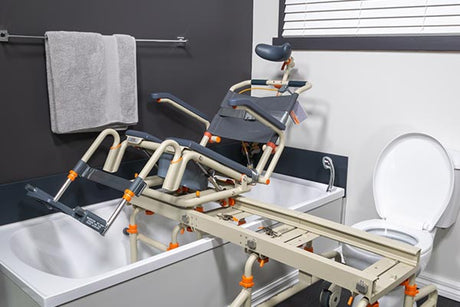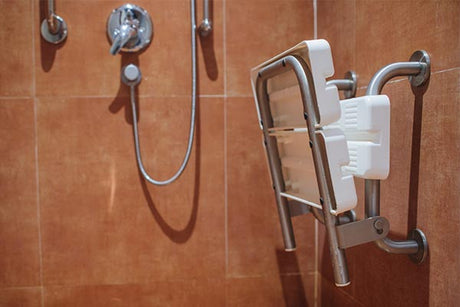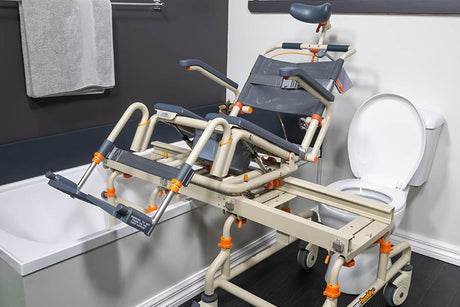Wooden furniture in the bathroom is a popular choice, offering a more natural aesthetic that suits many homes.
While a wooden towel rack or basin stool might work, should you really opt for a wooden shower stool as well?
The problems with using wood for shower chairs
Wood and water aren’t best friends
Most wooden bathroom furniture is perfectly usable as it only comes into contact with water every so often, and in most cases for short periods of time. A limited amount of water on a treated wooden piece of furniture is not an issue.
However, when a piece of wooden furniture comes under regular, heavy flow of hot water every day a number of times and is left to drip dry each time, the finish and wood can start to erode. This might not be noticeable in the short term, but after months and years, wooden shower stools may lose their structural integrity if the wood is compromised.
Wooden surfaces are slippery
A wooden shower stool sanded and finished in lacquer is a fairly smooth surface. When the shower runs onto a wooden stool seat, a user is at risk of slipping. This is especially risky if the user is moving around bathing themselves and reaching for items like soap and shampoo.
Given many of these wooden stools are designed as simple platforms to sit on, there is not the degree of support that a more sophisticated shower transfer system would offer. When a person steadies themselves on the seat with their hand, this slippery surface can result in an accident.
Wooden shower chairs can splinter
Over a long period of time a wooden shower chair, like any wooden furniture exposed to a swing in temperatures and water, may start to erode and have sharp splinters come away. The last thing anyone wants when bathing is for a cut or scratch.
But more important…
Wooden seats don’t allow for lift free transfer in and out of the shower
Aside from the material’s tendency to erode over time, wooden shower seats or benches don’t provide one of the most critical parts of a bathroom routine – getting into and out of the shower. Wooden shower seats will need to be accompanied with a carer to lift and place the user onto and off of the stool. Furthermore, these stools won’t keep someone in place without their own level of body control. Wooden stools usually need to be combined with grab bars to aid upper body stability for those seeking some level of independence with bathing.
A more advanced shower transfer system should take care of all this with non-destructive installation and full body support meaning the user can focus on the process of bathing and enjoying their shower.
Where to use wood
Wooden seats outside the shower are fine
If you’re in the process of looking for wooden stools for the bathroom, note that any caution around these that we are offering is done so in relation to units designed to be inside the shower. With that said, we wouldn’t typically recommend wood as the best material for the bathroom for functions around mobility. Storage, steps and ornamental = wood is fine. Support, transfer and grip = wood is probably not your best bet.
Things to consider then choosing a shower chair

Determine the transfer and bathing needs, then pick a solution based around this
If you’re the individual or family member of a mobility impaired loved one, it’s critical that you involve an occupational therapist (OT) in the process of improving the bathroom experience. Many direct to consumer products like low cost wooden shower chairs are bought without a full understanding of support needs.
An OT will design a daily plan including a detailed bathroom plan that will likely require equipment. Once a proper assessment of the individual’s mobility level is done, there’s better scope with which to choose a shower chair from.
This plan, combined with a clear picture of your bathroom size and configuration can help to choose the perfect system. Showerbuddy provides a range of chairs for different sizes, mobility levels and bathroom types.
Consider the longevity of your shower chair
There’s no reason why a good shower transfer chair shouldn’t last a long time. If the build quality, components, materials and design is right, your shower transfer chair should be relied on for years and years. In fact many Showerbuddy clients have the same chair through childhood, teens and adult – using accessories to adjust its fit.
If you opt for a wooden shower stool that isn’t able to stand the elements of daily showers, you may be replacing it before too long. Multiple cheap shower stool purchases can become more expensive than a proper piece of assistive technology.
Choosing better materials

Why high quality bathroom assistive technology uses different material
The best bathroom assistive equipment is typically built from strong metal, plastic and fabric elements from the seat coverings to the frame to the fittings. This type of equipment provides so much value through its ability for adjustment. The Showerbuddy range offers control over arm, feet, back and neck rests, different cushion openings, back supports, and tilting. A wooden shower stool simply can’t stack up with that degree of control and support.




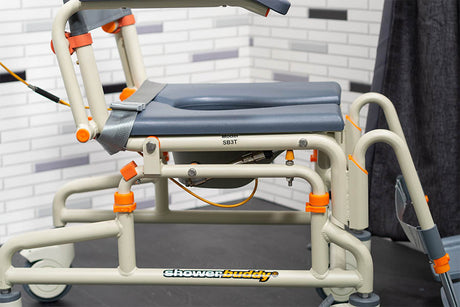
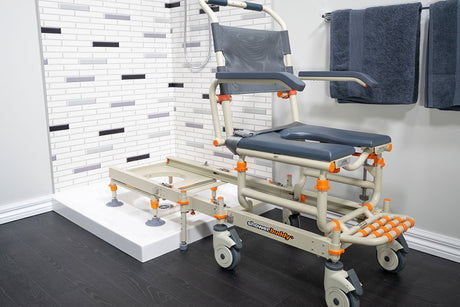

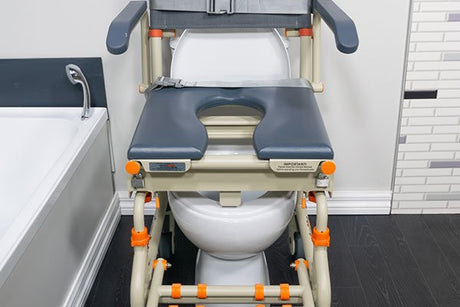




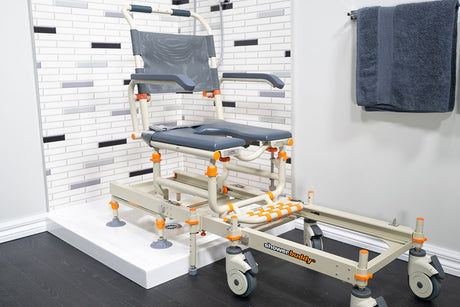

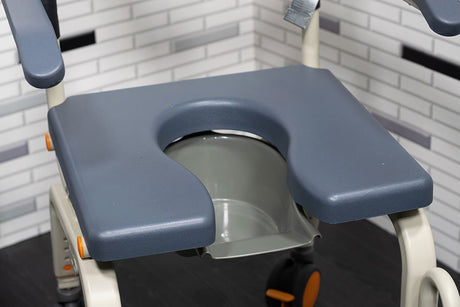

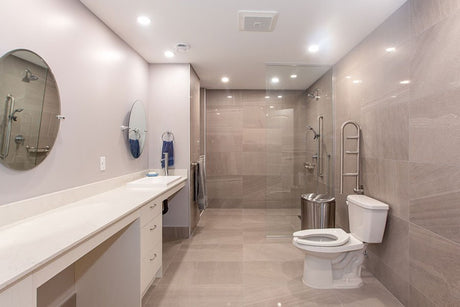

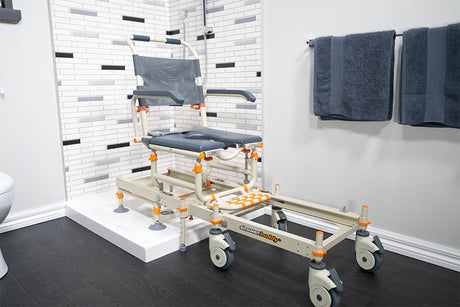






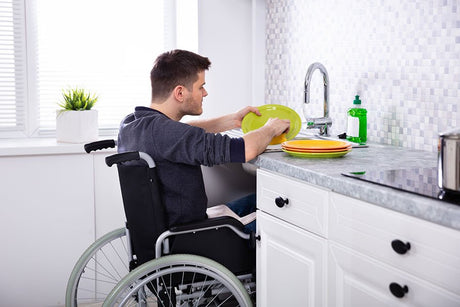
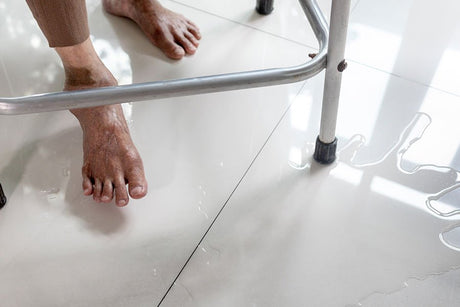
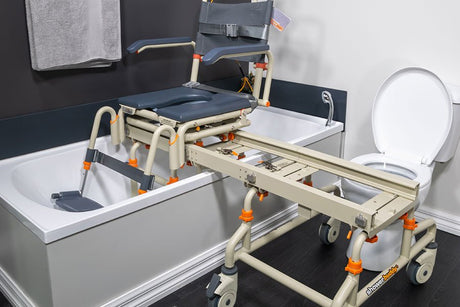
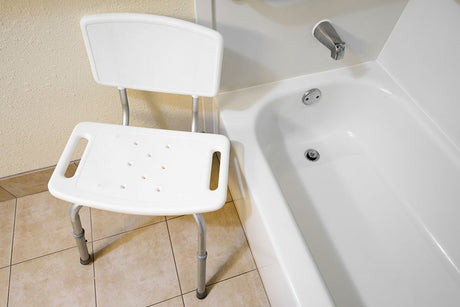
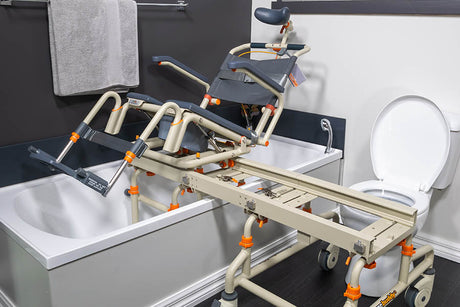

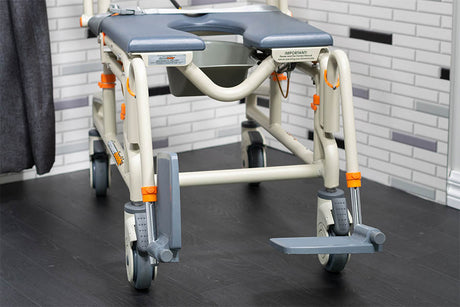

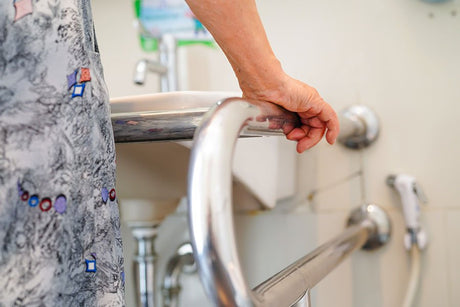


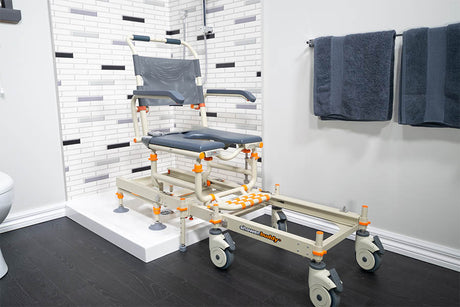





![Toilet Training A Young Child With Mobility Challenges [And How A Shower Chair Can Help]](http://shower-buddy.com/cdn/shop/articles/toilet-training-disabled-child.jpg?v=1699405543&width=460)





